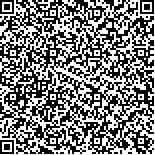下载中心
优秀审稿专家
优秀论文
相关链接
摘要

多角度偏振成像仪(DPC)是一种多角度、多光谱具备偏振测量功能的大视场偏振遥感器。偏振定标光源的发散角与DPC像元对应的视场角匹配一致,是提升DPC实验室偏振定标精度的关键因素之一。通过比较实验室偏振定标与在轨定标的状态差异,参考DPC在轨运行光学系统的成像原理,通过微分运算方式,建立一种偏振定标光源的发散角与单像元视场角匹配的模型,分析结果给出了光源的发散角应大于0.14°才能满足DPC全视场的偏振定标要求。以490 nm偏振通道为例,设计了采用可调光谱积分球替代0.125°发散角扩束镜平行光源方案,验证所建立模型和分析结果的合理性。结果表明,DPC的线偏振度测量值和理论预测值间的平均差异由1.26×10–2减小至4.4×10–3,说明所建立模型和采用可调光谱积分球作为偏振定标光源方案可用于DPC的实验室偏振定标。
A Directional Polarization Camera (DPC) is a multi-angle multi-spectral wide-field polarization remote sensor that performs polarization measurement. Matching the divergence angle of the calibration light source with the corresponding field angle of the DPC pixel is important in achieving high-precision laboratory polarimetric calibration.
A model of matching the divergence angle of the calibration light source with the corresponding field angle of the DPC pixel is established by comparing the state difference between on-orbit detection and laboratorial polarization calibration. This comparison is performed according to DPC on-orbit optical system imaging theory using the differential operation method. The divergence angle of the calibration light source should be larger than 0.14° to fulfill the polarization calibration requirement according to the analysis result of the model. The 499 nm polarization channel is taken as an example, and spectrum-tunable integrating spheres are used instead of the 0.125° divergence angle of quasi-parallel light as polarization calibration light source to test the validity of the model and the analysis result.
Using spectrum-tunable integrating spheres instead of quasi-parallel light decreases the average deviations between the measurement DOLP of DPC and theoretical reference from 1.26×10-2 to 4.4×10-3.
We validate the model of matching the divergence angle of the calibration light source with the corresponding field angle. The method that uses spectrum-tunable integrating spheres instead of quasi-parallel light satisfies the high-precision laboratory polarimetric calibration requirements of DPC for scientific applications.

